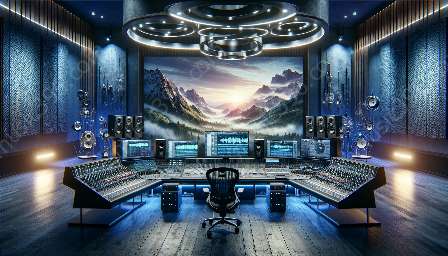Live concert recordings often present a unique set of challenges in capturing high-quality audio due to various environmental factors such as crowd noise, background chatter, and equipment interference. In this article, we will explore noise reduction techniques specifically tailored to live concert recordings, and how they align with audio signal processing principles. By understanding and implementing these techniques, audio engineers can significantly improve the quality of live recordings and enhance the overall listening experience for the audience.
Understanding Noise in Live Concert Recordings
When recording live concerts, the presence of ambient noise is inevitable. This can include audience reactions, venue acoustics, and the sound of equipment in operation. These environmental factors can result in an overall audio signal that is noisier and less clear compared to studio recordings. However, with advanced noise reduction techniques, it's possible to mitigate these challenges and capture high-fidelity audio in a live setting.
Compatibility with Audio Signal Processing
Noise reduction techniques in the context of live concert recordings are closely related to audio signal processing, which encompasses a range of methods and algorithms designed to enhance, manipulate, or analyze audio signals. By integrating noise reduction techniques into the audio signal processing workflow, engineers can effectively reduce unwanted noise while preserving the integrity of the original audio content.
Key Noise Reduction Techniques
Several noise reduction techniques can be effectively applied to live concert recordings, each with its unique advantages and considerations. Some of the key techniques include:
- Adaptive Noise Cancellation: This technique involves the use of adaptive filters to continuously monitor and cancel out unwanted noise, making it particularly useful for live settings where the noise profile might constantly change.
- Spectral Subtraction: By analyzing the spectral profile of the recorded audio, spectral subtraction techniques can effectively isolate and attenuate background noise, resulting in cleaner audio.
- Multi-Band Noise Gating: By segmenting the frequency spectrum into multiple bands, engineers can apply specific noise gating thresholds to target and suppress noise in different frequency ranges, tailored to the characteristics of live concert recordings.
- De-Reverberation: Live concert venues often introduce reverberation that can degrade the clarity of audio recordings. De-reverberation techniques aim to reduce or remove the effects of reverberation, resulting in clearer audio with improved intelligibility.
Real-Time Processing Challenges
One of the key considerations for optimizing noise reduction techniques for live concert recordings is the demand for real-time processing. Unlike post-production scenarios, live recordings require instantaneous noise reduction that does not introduce significant delays or artifacts. This necessitates the use of efficient algorithms and processing methods that can operate in real-time without compromising audio quality.
Technological Innovations
Advancements in audio signal processing have led to the development of specialized hardware and software solutions dedicated to noise reduction in live environments. These innovations leverage advanced algorithms and signal processing architectures to deliver real-time noise reduction capabilities without sacrificing audio fidelity, making them invaluable tools for live sound engineers and recording professionals.
Optimizing Workflow Integration
To fully optimize noise reduction techniques for live concert recordings, integration with existing audio signal processing workflows is essential. This involves seamless integration of noise reduction algorithms and tools with recording equipment, digital audio workstations (DAWs), and live sound systems. By streamlining the integration process, engineers can achieve efficient noise reduction without disrupting the overall recording and production workflow.
Best Practices and Considerations
When implementing noise reduction techniques for live concert recordings, it's important to consider the following best practices to ensure optimal results:
- Pre-Event Preparation: Conducting thorough sound checks, identifying potential sources of noise, and optimizing microphone placement can contribute to better noise reduction outcomes during live recordings.
- Dynamic Parameter Adjustment: Adaptive noise reduction techniques benefit from dynamic parameter adjustments to adapt to changing noise levels and environmental conditions throughout the concert.
- Quality Monitoring: Regular monitoring and analysis of audio signals during live recordings help in identifying noise sources and making real-time adjustments to the noise reduction process.
Conclusion
Optimizing noise reduction techniques for live concert recordings involves a synergistic approach that combines the principles of audio signal processing with specialized methods tailored to the challenges of live environments. By understanding the compatibility of noise reduction techniques with audio signal processing and embracing technological innovations, engineers can effectively address the complexities of live concert recordings and deliver exceptional audio quality to audiences.


